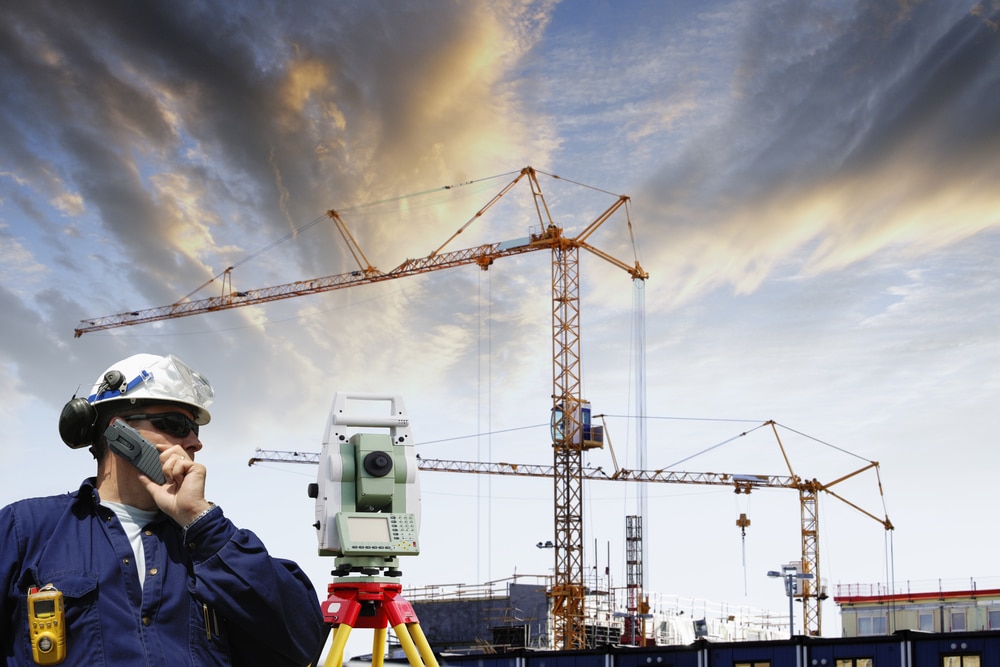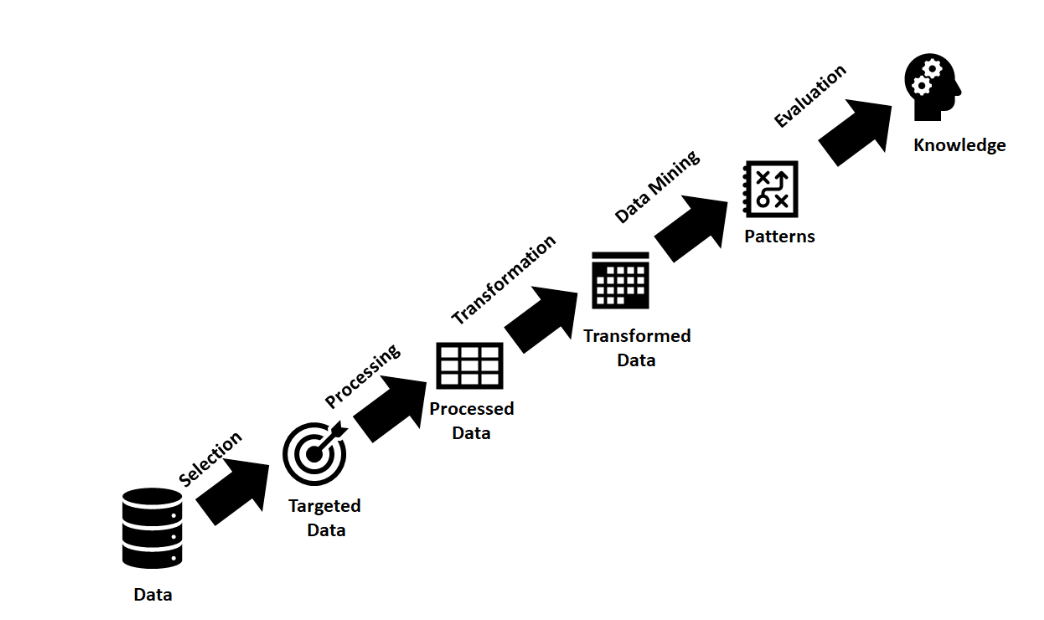Artificial Intelligence increases its power in different sectors. Furthermore, that kind of technologies is more reachable. The manufacturing sector is using AI technologies in the core of production for quality control, shortening design time, reducing materials waste, improving production reuse and performing predictive maintenance.
What about the construction sector? In the construction sector, the technology level is always lower than in the manufacturing sector. But, AI is different from all other technologies. If you have the data, you can start to see the benefits of AI technologies without any extra effort.
This article based on the experience of Botmore Technology which is working on AI and ML Technologies on the construction site.
2019 is a critical year to gain competitive advantage
Profitability of the construction sector is going down globally. In addition to that productivity, quality is drastically low respect to the manufacturing sector. So the early adapters for AI technologies in construction sector can gain a competitive advantage to increase their profit margins.
Which technologies will change the sector:
- AI-powered image processing
- Machine learning
- Natural language processing
- Data-driven solutions
- Robotics
- BIM management
Machine Learning
You can use ML in different areas in construction management such as image recognition, problem-solving, digital assistants, workflow and schedule optimization.
In the first step, you need to collect data in a construction project. Main data sources of a project include Design, Machinery, Employee, Contracts, Planning Tools, ERP, Specifications, and Handbooks. Of course, the number of these sources may change depending on the project.
After collecting data in a central database, you can crunch this data for several purposes. If you ask proper questions, ML algorithms can find data-driven answers to those questions.
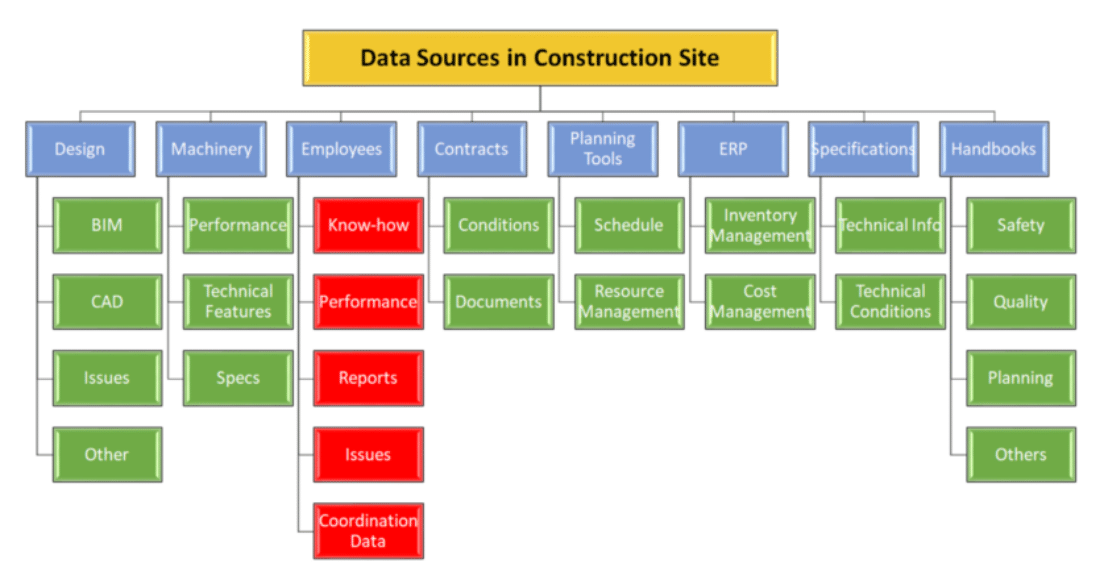
You can use ML algorithms in different construction workflows such as scheduling, quality check, safety management, issue tracking, resource and design management.
For example, data about construction activity, resource quantity, weather conditions, schedule information easily can be used to make ML-based predictions or warnings. You can see a diagram for ML powered prediction system for piling works.
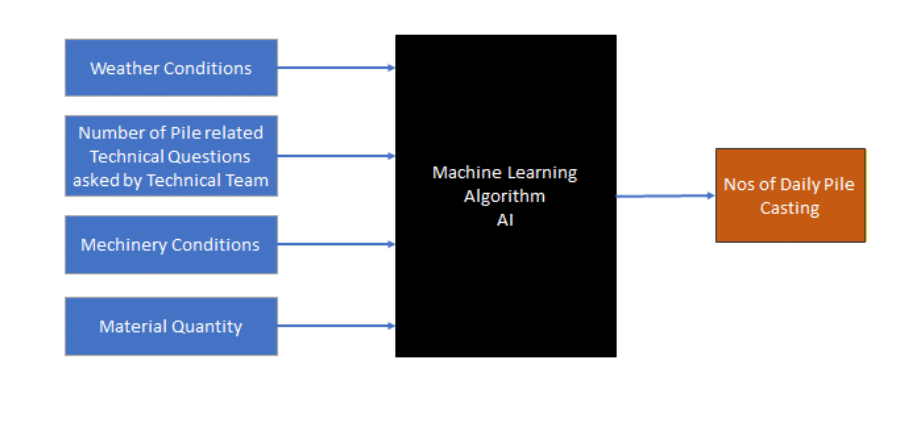 Another example is issue management. As you know, there a lot of issues are recorded in the construction site using different tools. ML algorithms can learn this process to evaluate the priority of these issues and make suggestions about possible solutions.
Another example is issue management. As you know, there a lot of issues are recorded in the construction site using different tools. ML algorithms can learn this process to evaluate the priority of these issues and make suggestions about possible solutions.
You can increase the number of that kind of examples. The key is to have data to feed ML algorithms and asking the right question about your project.
In 2019 we will see more tool using ML algorithms in construction project management and this help to increase productivity in a construction site.
Data, data, data…
All technology companies are talking about the value of data. The first step in data management is the digitalization of construction management. Traditional construction project management solutions create separate data silos. Moreover, data flow isn’t real-time and continuous. Hence, all collected data can’t create expected additional value in a construction project.
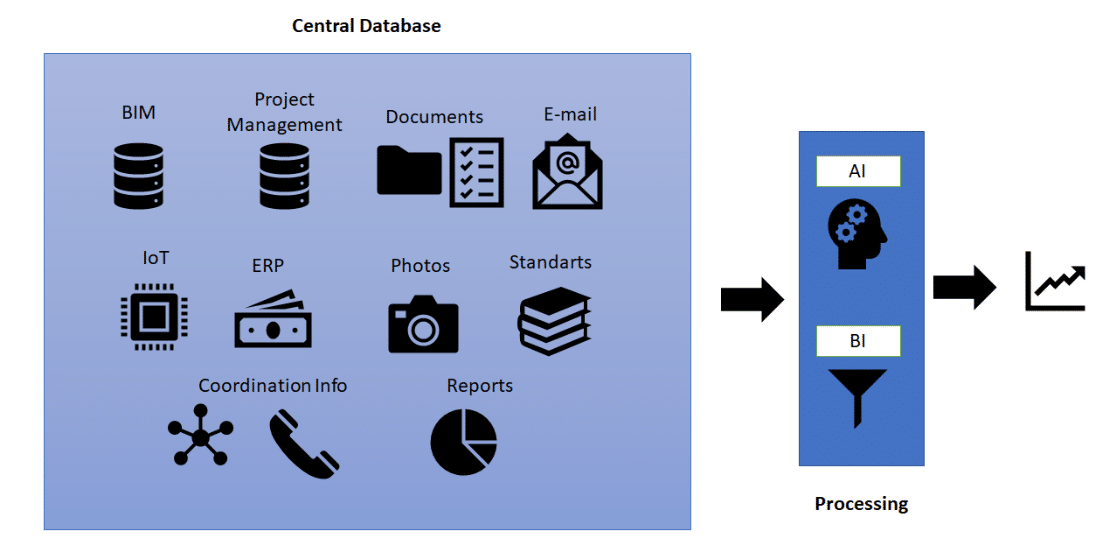 So, you should create a central database for your project and company. This central database system creates an opportunity to use ML (Machine Learning) and BI (Business Intelligence) technologies.
So, you should create a central database for your project and company. This central database system creates an opportunity to use ML (Machine Learning) and BI (Business Intelligence) technologies.
In a summary, you need data, but the most important things are %100 digitalization and create a unified data management system. After satisfying those conditions, you can start to think about how you will design construction workflow models.
From data to knowledge
We are using ML algorithms and BI techniques to reach knowledge from data. For this purpose, we must filter the targeted data and refine it through different processes. We need to capture the patterns that can answer the questions related to the project by doing data mining.
And we should extract meaningful information from the data by working on these results. In summary, we must transform the data into knowledge. Otherwise, we’ve wasted valuable data we collected.
Algorithms can be a Solution!
The construction site has chaotic conditions. Weather, subcontractor decisions, material usage, machinery management, safety problems directly affect the success of a project. In these chaotic conditions, the experience of engineers plays an important role. We can trust our experienced team but algorithms can be your the most experienced consultant in the construction site.
Pros of algorithms
- With proper data, they can create solid decision support,
- Your algorithm learns from your data, so it is a competitive advantage for your company.
- You can find unpredictable patterns in your data set and using this pattern your predictions and precautions can be better.
- You can protect your know-how with your algorithms. It will be independent of your employees.
Cons of algorithms
- Who is responsible? This is the key question because if an algorithm makes mistake, nobody takes responsibility.
- Biased data collection. If your data isn’t distributed properly, your algorithms can start to make systematic mistakes.
- You should test your algorithms for different conditions.
- You may need new specialists in your company about data science, data mining and AI.
Of course, we don’t replace human experience with AI. But AI algorithms can be a decision support system to increase quality and productivity.
Digital assistants can be your next coworker
NLP (Natural Language Processing) as a subtopic of ML has been trying to create communication skills of Artificial Intelligence applications. In other words, an AI agent can understand human expression using NLP technologies. Siri and Google Assistant are the most popular AI agents using NLP.
Nowadays, NLP technologies are developed significantly. So you can use AI agents in your construction projects. As you know in a construction site engineers spend a lot of time on coordination. Moreover, data transfer from the construction site is a vital problem. Answer of all those problems can a construction assistant
A digital assistant can answer technical and project related questions. It can ask questions to capture progress data. Furthermore, it can be a proper interface for warnings, predictions and workflow optimizations.
AI powered robotics
Robotics is increasing its effect on the sector with 3D printers, robotic arms, robots making some activities on construction site such as bricklaying, carrying material, making installations of prefabric components. All these robots are using ML technologies to learn different problems. So an increase in robotic technology will be related to the success of R&D activities in AI-powered construction solutions.
Especially developed countries have to use robotic solutions to compete with developing countries which have low man-hour rate. Otherwise, developed countries will lose their global competitiveness in the construction sector.
AI powered design
The design is one of the most important parts of construction production. Especially, Building Information Modeling (BIM) has played a vital role in not only increasing design quality but also creating an opportunity for proper management of design data.
BIM reached a level of maturity in 2018. So, everybody started to ask what can be done with this design data.
If you have that kind of data you can use, ML algorithms can automize different steps of a design process.
For example:
- You can make automatic design checks,
- You can make fast constructability analysis,
- You can optimize your design with respect to cost or different criteria.
Of course, you can increase the number of those examples. As a summary, if you look BIM as a data silo, you can start to use this data as an input for AI models.
AI powered image processing
In a construction project, site teams have been taking pictures and videos on daily basis. This pictures and videos are already used for reporting purposes. But AI is transforming these pictures and videos to data.
Using ML algorithms, your pictures and videos can be analyzed automatically and you can reach related pictures and warning whenever you need. Generally, we call them “smart tags” and they allow for a better system to categorize and search your photos.
Furthermore, you can use images and videos to follow the construction progress in the construction. You can compare BIM with construction images or videos and using this comparison you can create AI-powered suggestion systems.
As you know, it isn’t easy to follow activities in the chaotic atmosphere of a construction site. Hence, we will see more case study about AI-powered image and video processing in 2019.
Why 2019?
In 2019, AI technologies are more accessible. Machine learning libraries, infrastructure create opportunities for new product development. Furthermore, technologies like BIM (Building Information Modeling) reached maturity and sector started to ask more detailed questions about the benefits of new technology solutions.
On the other hand, in 2018 there is a lot of new investment in construction technology start-ups. So, in 2019, the number of new technology start-ups in the construction sector will increase. And this situation will create a new ecosystem in the construction technology area.
In addition to that profit margins in the sector is going down. Hence companies are trying to find new solutions to increase productivity. That’s why; a lot of construction company started to work on R&D activities.
At least but not last, the industry 4.0 trend in the manufacturing sector is directly affecting the expectations in the construction sector. So, this year, AI, robotics and data management will be more popular in the construction sector. Sector experts will start to compare best practices in manufacturing with the construction sector.
About the author: Aydin Ozkekic is CEO of Botmore Technology.
